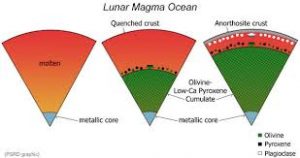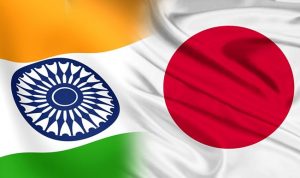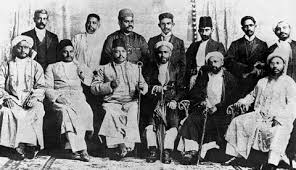Today’s Current Affairs: 23rd August 2024 for UPSC IAS exams, State PSC exams, SSC CGL, State SSC, RRB, Railways, Banking Exam & IBPS, etc
Table of Contents
Orangutan Diplomacy:

Malaysia has initiated “Orangutan Diplomacy” to address sustainability concerns related to palm oil-linked deforestation affecting orangutans, in response to backlash.
- Orangutans widely recognized for their distinctive red fur, are considered to be the largest tree-dwelling mammals.
- They are primarily arboreal, spending over 90% of their waking hours in trees.
- Orangutans are highly intelligent and share 4% of their genes with humans, making their conservation even more significant.
- They inhabit the Indonesian island of Sumatra and the Malaysian and Indonesian parts of Borneo.
- Their habitat spans from lowland peat swamp forests to high-altitude mountainous forests, reaching nearly 6 kilometres above sea level
- There are three species of orangutans: Bornean, Sumatran, and Tapanuli.
- Adult males are generally about twice the size of females, standing up to 3 meters tall and weighing up to 130 kg in the wild.
- They are covered in long, sparse orange or reddish hair. They possess arms significantly longer than their legs and have grasping hands and feet with long, curved fingers and toes. Mature males develop prominent cheek pads, a unique feature among primates.
- Lifespan: Orangutans can live up to 50 years in the wild
- They are primarily daytime feeders with a diet mainly consisting of fruit and leaves such as lychees and figs. They also consume nuts, bark, insects, and occasionally bird eggs.
- Orangutans are known for their semi-solitary behaviour.
- Though they are the most solitary among great apes, they do show social tolerance during periods of high fruit availability, coming together in groups known as parties.
- All three species of orangutans are listed as ‘Critically Endangered’ on the IUCN Red List.
Lunar Magma Ocean:

The recent findings from India’s Chandrayaan-3 mission have sparked renewed interest in the Lunar Magma Ocean (LMO) theory, a crucial concept in planetary science that explains the moon’s early formation.
- Chandrayaan-3’s Pragyan rover identified a rock type known as ferroan anorthosite in the lunar south pole region.
- This discovery is significant as it aligns with earlier observations made by the Apollo and Luna missions, confirming the theory that these rocks are remnants of an ancient magma ocean that once covered the moon.
- Lunar Magma Ocean (LMO) is a hypothesized early stage in the moon’s history when its surface was entirely molten.
- This ocean of magma is believed to have formed following a catastrophic impact between the early Earth and a Mars-sized body, leading to the formation of the moon.
Atomic Clocks- Lunar Time Standard:

An international astronomical group has called for a lunar time standard to facilitate future missions, addressing time discrepancies on the Moon due to its unique gravitational effects.
- Atomic clocks are the most precise timekeeping devices, critical for applications requiring extreme accuracy, such as GPS systems, telecommunications, and scientific research.
- These clocks measure time using the resonant frequencies of atoms, such as cesium-133.
- In atomic time, one second is defined by the time it takes for a cesium atom to vibrate 9,192,631,770 times.
- The stability and accuracy of atomic vibrations make atomic clocks the most reliable devices for measuring time.
- Atomic clocks operate using a type of atom known as the cesium atom, which vibrates at a highly stable and precise frequency.
- The process begins in a microwave cavity, a chamber filled with cesium vapour.
- A microwave signal is introduced into this cavity, causing the cesium atoms to vibrate and emit radiation at a specific frequency.
- This emitted frequency is then detected and compared to a standard frequency.
- Any differences between the two frequencies are used to adjust the clock’s timekeeping, ensuring continuous precision.
Genome Editing- ISDra2TnpB:

A recent breakthrough in plant genome editing comes from a collaborative effort between the ICAR-National Rice Research Institute in Cuttack, India, and Pennsylvania State University, USA.
- Genome editing is a powerful tool that allows scientists to make precise changes to the Deoxy-Ribonucleic Acid (DNA) sequence of living organisms.
- This technology has vast applications in agriculture, where it can be used to enhance crop yields, improve resistance to pests and diseases, and introduce desirable traits like drought tolerance.
- The most commonly known genome-editing tool is CRISPR, which has revolutionised genetic research due to its precision and efficiency.
- CRISPR technology, particularly using proteins like Cas9 and Cas12, has been widely used in genome editing.
- These proteins work by cutting DNA at specific locations, allowing scientists to remove, add, or replace genetic material.
- However, a major limitation in plant genome editing has been the size of these proteins, which are often too large to be efficiently accommodated by plant cells.
- This has created a need for smaller, more efficient genome-editing tools that can work effectively in plant systems.
- The ISDra2TnpB genome editor have developed a new genome-editing tool called ISDra2TnpB, derived from the bacteria Deinococcus radiodurans.
- This tool is significantly smaller than the traditional CRISPR-associated proteins like Cas9 and Cas12, making it more suitable for use in plant cells.
Waterspout:

A luxury yacht sank off Sicily, Italy, during a violent storm, resulting in one confirmed death and six individuals missing, possibly due to a waterspout.
- Waterspouts are significant atmospheric phenomena characterised by rotating columns of air that form over water bodies.
- These tornado-like structures typically develop overseas or in large lakes, presenting a spectacular display of nature’s power.
- It is a weaker version of a tornado, typically lasting 5-10 minutes.
- Average diameter is around 165 feet (50 meters).
- Wind speeds can reach up to 100 km/h (60 mph).
- The formation of a waterspout varies depending on its type:
- Fair-weather waterspouts occur when cool air flows over open water, pulling water upwards and creating the waterspout.
- Tornadic waterspouts are more likely to form during thunderstorms. Some may even start as tornadoes on land and then move over water.
- These waterspouts typically develop in the sky and extend downward.
Prime Minister Employment Generation Programme (PMEGP):

KVIC and Department of Posts collaborate to boost PMEGP Implementation across India.
- PMEGP is a central sector scheme administered by the Ministry of Micro, Small and Medium Enterprises.
- Objectives is to generate employment opportunities in rural as well as urban areas of the country through setting up of new self-employment ventures/projects/micro enterprises.
- To bring together widely dispersed traditional artisans, rural and urban unemployed youth and give them self-employment opportunities to the extent possible, at their place.
- To provide continuous and sustainable employment to a large segment of traditional and prospective artisans and rural and urban unemployed youth in the country, so as to help arrest migration of rural youth to urban areas.
- To increase the wage-earning capacity of workers and artisans and contribute to increase in the growth rate of rural and urban employment.
India And Japan 2+2 Meet:

India and Japan recently held their third 2+2 Foreign and Defence Ministerial Meeting in New Delhi.
- The discussions, which took place against the backdrop of growing geopolitical tensions and China’s assertiveness in the Indo-Pacific region, focused on deepening bilateral cooperation across various sectors.
Key Highlights of the India and Japan 2+2 Meet:
- Both countries emphasised their commitment to a free, open, and rules-based Indo-Pacific.
- The strategic alignment is driven by China’s growing military presence in the region.
- The ministers supported Association of Southeast Asian Nations (ASEAN)’s unity and centrality, endorsing the ASEAN Outlook on the Indo-Pacific (AOIP).
- The AOIP emphasises ASEAN’s central role in fostering cooperation, stability, and peace across the Asia-Pacific and Indian Ocean regions.
- It also reflects ASEAN’s commitment to promoting a rules-based regional order founded on the principles of the United Nations Charter.
- They reaffirmed their commitment to advancing cooperation within the Quadrilateral Security Dialogue (QUAD), following the discussions at the Quad Foreign Ministers’ Meeting in July 2024.
- Japan and India expressed intentions to collaborate in security assistance to third countries for regional peace and stability.
- The ministers recognized defence cooperation as a pillar of their Special Strategic and Global Partnership.
- Japan’s National Security Strategy, issued in 2022, further bolstered the bilateral defence relationship.
- Progress made in multilateral exercises such as Veer Guardian (2023), Dharma Guardian (Military), JIMEX (naval), SHINYUU Maitri (air force) and Malabar (along with Australia and the US) were emphasised.
- They appreciated advancements in unmanned ground vehicles (UGVs) and robotics cooperation.
- Both countries agreed to revise and update the 2008 Joint Declaration to address contemporary security challenges. This update will reflect current priorities and align with the evolving global security landscape.
- Both sides condemned terrorism and violent extremism, with particular emphasis on cross-border terrorism.
- They called for bringing perpetrators of the 26/11 Mumbai attacks and other incidents to justice.
- Efforts to eliminate terrorist safe havens, cut off financing channels, and halt the movement of terrorists were supported, with specific mention of groups such as Al Qaeda, ISIS/Daesh, Lashkar-e-Tayyiba (LeT), and Jaish-e-Mohammad (JeM).
Antihyper Hydrogen-4:

The newly found antiparticle, called antihyper hydrogen-4, could have a potential imbalance with its matter counterpart that may help scientists understand how our universe came to be.
- Antihyper Hydrogen-4 is made up of an antiproton, two antineutrons and one antihyperon (a baryon that contains a strange quark).
- Physicists found traces of this antimatter among particle tracks from 6 billion collisions at the Relativistic Heavy Ion Collider (RHIC) at Brookhaven National Laboratory in New York.
Key findings:
- Both hyperhydrogen-4 and its antimatter counterpart antihyper hydrogen-4 seem to wink out of existence very quickly.
- The physicists didn’t find a significant difference between their lifetimes.
- The scientists’ next step will be to compare the masses of the antiparticles and their particle opposites, which they hope could reveal some clues as to how our matter-heavy universe came to be.
- Antimatter: Except for having opposite electric charges, antimatter has the same properties as matter, same mass, same lifetime before decaying and same interactions.
Hema Committee Report : Film Industry

The Hema committee report on the Malayalam film industry was released. It has revealed alarming instances of sexual abuse, gender discrimination, and inhuman treatment of women in the Malayalam film industry.
- It was led by retired Kerala High Court judge Justice K Hema, with members including veteran actor Sharada and retired IAS officer K B Valsala Kumari.
- It include unwanted physical advances even before commencing work, rape threats, code names for women who would agree to compromise among other shameful acts
- The report highlights the prevalence of the casting couch, where women are often forced to exchange sexual favours for job opportunities.
- Directors and producers often coerce female actors into making compromises, with those who comply being termed “cooperating artists.”
- Women were forced to work with abusers, resulting in significant emotional trauma.
- The casting couch is a euphemism for the practice of soliciting sexual favours from a job applicant in exchange for employment in the entertainment industry, primarily acting roles.
- Many female film workers frequently bring their parents or close relatives to the set due to fears of sexual demands and harassment.
- The report indicates that the Malayalam film industry is plagued by criminal influence.
- Many industry men, sometimes under the influence of liquor or drugs, insistently knock the hotel doors of female artists, causing significant distress.
- Although such crimes are covered by the Indian Penal Code and the Sexual Harassment of Women at Workplace (Prevention, Prohibition, and Redressal) Act 2013, women in the film industry are apprehensive about the consequences of lodging an official complaint.
- The stigma surrounding sexual harassment, particularly for public figures, frequently deters actors from reporting such incidents.
- Online harassment poses a significant challenge for women in cinema, with both female and male artists facing cyberbullying, public threats, and defamation.
- Social media platforms become avenues for vulgar comments, images, and videos, where female artists are especially targeted with explicit and threatening messages.
- Female artists often refrain from drinking water on set due to inadequate toilet facilities, especially in outdoor locations.
- The situation worsens during menstruation when female artists struggle significantly with changing or disposing of their sanitary products.
- The junior artists lack a minimum remuneration. Junior artists are in some cases “treated worse than slaves” with work extending up to 19 hours. Intermediaries misappropriate a good part of their payments, which are not given on time.
Natal Indian Congress : 130th Foundation Year

22nd August 2024 marked the 130th foundation year of Natal Indian Congress (NIC) which was established in August 1894, based on a proposal by Mahatma Gandhi on 22nd May 1894.
- It was was formed to fight discrimination faced by Indians in South Africa.
- The Natal Indian Congress (NIC) was the first Indian Congress established, founded by Mahatma Gandhi in 1894 to fight against discrimination faced by Indian in Natal (province of South Africa).
- From the 1920s, the NIC operated under the South African Indian Congress (SAIC).
- The organisation underwent a shift towards more radical leadership in the 1930s-1940s with the emergence of Dr. G.M. Naicker, who became its leader in 1945.
- The NIC’s increased militancy led to the imprisonment of several leaders by the 1950s and 1960s.
- Despite not being officially banned, repression and harassment led the NIC to halt activities until its revival in 1971 with a focus on civic work.
- In the mid-1980s, the NIC was key in forming the United Democratic Front (UDF).
- The UDF’s goal was to establish a “non-racial, united South Africa.
PhonePe’s ‘Credit Line On UPI’ Revolutionizes Digital Transactions:
PhonePe on August 22, announced the launch of Credit Line on UPI on its platform. Consumers who avail credit lines from their banks can now link these credit lines to UPI on PhonePe and seamlessly make merchant payments.
Rashtriya Vigyan Puraskar 2024:
President Droupadi Murmu presided over the first-ever investiture ceremony for the Rashtriya Vigyan Puraskar (National Science Awards). These awards, instituted last year to replace all existing science accolades, mark a new chapter in recognizing scientific excellence in the country.
NCLT Approves Slice-North East Small Finance Bank Merger:
The National Company Law Tribunal (NCLT) has approved the merger of Slice, a leading fintech company in India, with North East Small Finance Bank (NESFB).
NPCI Launches ‘UPI Circle’ for Secure Payments Among Trusted Users:
The National Payments Corporation of India (NPCI) has unveiled a new feature called ‘UPI Circle’ on the Unified Payments Interface (UPI) platform, allowing primary UPI account holders to securely delegate payment responsibilities to trusted secondary users.
RBI Forecasts Private Capex to Rise to ₹2.45 Trillion in FY25:
The Reserve Bank of India (RBI) study forecasts a substantial increase in private capital expenditure, projecting it to reach ₹2.45 trillion in FY25, up from ₹1.59 trillion in FY24. This rise is attributed to robust investment intentions and the ongoing emphasis on infrastructure development
Germany Captain Ilkay Gundogan Announces International Retirement from Football:
33-year-old captain of the German national football team, has officially announced his retirement from international football. This decision comes on the heels of Germany’s performance at Euro 2024,
Union Minister Giriraj Singh Presents Handicrafts Exports Awards:
The Export Promotion Council for Handicrafts (EPCH) organised its 24th Handicrafts Export Awards Function on August 21, at the Convention Hall, The Ashok Hotel, New Delhi.
Maharaja Bir Bikram Kishore Manikya Bahadur : Birth Anniversary
The Prime Minister (PM) paid homage to Maharaja Bir Bikram Kishore Manikya Bahadur on his birth anniversary. PM highlighted his significant contributions to Tripura’s development and his dedication to empowering the poor and tribal communities.Maharaja Bir Bikram Kishore Manikya Bahadur was born on 19th August 1908 in Tripura, also known as the “Modern Architect of Tripura”.




